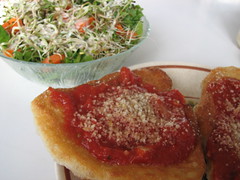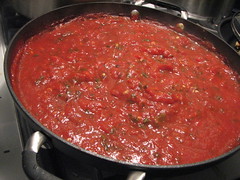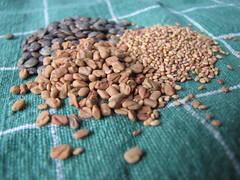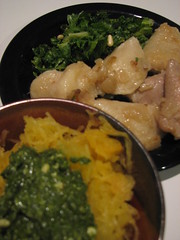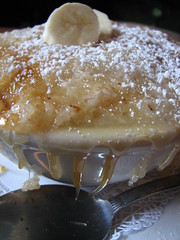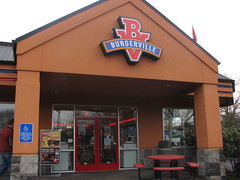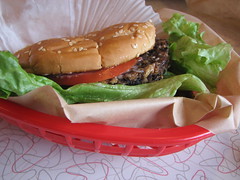August 29th, 2009
Fermentation Festival Comes to Portland
I realized this week that I’m not alone in my fermentation fetish. Being a fan of Sandor Katz, I received an email from him detailing his whereabouts and I was excited to discover that not only was he coming to Portland, but there was a whole free festival centered around fermentation and community. I don’t think the event planners realized how big of a turnout it was going to be and neither did I. I only know a few people who are interested in fermenting and the rest of my friends just consider it part of my quirkiness. But the funny thing, it’s not weird and out there, it’s the way things used to be. Eating used to center on preserving the harvest and making food last. So many cultures have fermenting and culturing as a base of their food history and as the world gets more Westernized, there is a fear of it’s loss for not only history’s sake but for our health as well. I won’t wax on regarding the health benefits of fermented foods but in a nutshell, it’s proven to support the immune system, aid in digestion and creates a conscious bond with our food and in doing so, our place on earth.
The festival only lasted 2 hours but it was a crowded one. Luckily this type of community was as excited as me and patient enough to wade through the masses of people to sample each other’s ferments and chat a bit. I do wish it was a little less crowded or in a bigger venue because I would have liked more time to talk to the people sharing their home ferments but I felt like once I grabbed a sample, I had to keep moving through the room. There was a lot of kefir, sauerkraut and kombucha to sample and I got to try a few new things as well. I tried an Earl Grey Kombucha which was divine and now I feel inspired to branch out with my kombucha batches. I’ve been doing solely green and Oolong bases and adding in some fruit simple syrups for the second ferment. I think this event was eye opening because fermenting is very personal and it was great to see people making their own variations, like a batch of sauerkraut that had grated fresh turmeric root in it, making it a bright yellow. The tastiest kefir I had was a pina colada kefir, which must have been a coconut water kefir with pineapple juice. It was refreshing and delicious and a nice way to introduce culturing to the general population.
The extreme end of the introduction spectrum was the natto, which is soybeans fermented with a bacteria called Bacillus subtilis. I had only heard of natto and how gross it is. I considered buying the bacteria when I stocked up on tempeh starter but was scared of natto and this business of refined palates and obscure Japanese flavors. Well, I am proud to admit that I tried it and it wasn’t as disgusting as I anticipated. It was sort of nutty in flavor and phlegmy in texture. They served it on nori, which I didn’t like but I think it would be good in fried rice or mixed with other things. Perhaps natto will make it on my list of things to make at home, but I know I’m not in a rush to make it. My current fermenting counter space is relegated to sour dill pickles, which I’m really excited about. A friend from college was making them last time I visited her and I got to try them and they were delicious. I love the idea that it’s just cucumbers, salt and water and time does the rest. Expect an upcoming post and photos of my sour adventures.
The highlight of the festival was getting to meet Sandor, who was so sweet and nice. He seemed a little overwhelmed with the crowd but he definitely took time to talk to people and answer questions. I was worried about the amount of surface mold on my pickle crock and he gave me the reassurance that I needed. He brought a crock of “kraut-chi” to share and I was lucky enough to try a bite before it ran out. It had cabbage, okra, peppers, mung sprouts, Nasturtium and more. It was the ultimate example that you can ferment anything! There were some home brews there as well, which were fun to try. There was a spruce ale, a local wine and hard cider (which ran out before I got to try it). Other highlights included a fruit kimchi, gingered carrots and brined garlic. It was a fun time and I can’t wait for more fermenting events because it was obvious that this city is ripe and ready for it. I am not alone!




